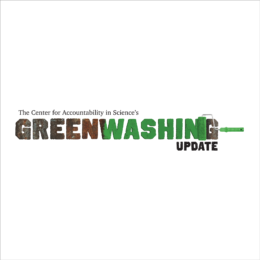Greenwashing: Solar Panels

Curbing carbon emissions has been a top priority for environmentalists in the past few decades. Activists have urged businesses and governments to pursue alternative energy sources spurring investments in several forms of renewable energy. But not all alternatives are created equal.
Solar power advocates act as though carbon-free energy is literally pouring from the sky without consequence, but the reality is that collecting solar energy is not as simple or clean as it may seem.
The most glaring problem with solar power is that it is not a viable alternative to fossil fuels. A football field covered in solar panels struggles to power more than a few homes because solar power is not efficient or dependable. The sun is not in the sky 24 hours per day, 365 days per year. Even in places where the sunlight is less impacted by seasonal changes, cloudy days still limit the amount of power solar panels can generate. The newest solar panels on the market have an average efficiency ranging from 15 to 20 percent.
On their own, solar panels cannot provide the amount of electricity needed to power the current standard of living in most countries. Because of this fact, many solar panels must be backed up by fossil fuels or batteries.
Currently, scientists are still striving to develop batteries large enough to fill the role of the back-up power source. While that technology could be just around the corner, the resources needed to create these batteries have their own harsh effects on the environment. Batteries are made from rare earth metals which are a.) not renewable and b.) toxic to the environment and the people who harvest them.
The process of gathering the rare earth metals and combining them to produce batteries is very energy-intensive, meaning many fossil fuels are needed in the production of each battery. Most rare-earth production and processing occurs in China, where environmental standards leave a lot to be desired.
Even if the efficiency problems are absolved and cleaner battery alternatives are invented, there is still a problem of space. Solar panel fields require a lot of space. (Solar power requires 100 times more space to create the same amount of power as natural gas.) While there are innovative ways of placing solar panels on rooftops or other already developed structures, the implementation of massive solar panel fields could require forests to be cut down or fields to be covered to make enough room for energy collection.
But the most glaring environmental problem solar panels face is the panel itself. On the outside, solar panels — technically referred to as photovoltaic cells — are just large sheets of black glass. Glass is made from sand, of which the earth has plenty. So what’s the problem?
Solar panels are not just sheets of glass. Photovoltaic cells require many toxic chemicals to produce. According to the U.S. Energy Information Administration, solar panels include toxic fluids that are used to transfer heat within the cell. The federal government regulates the disposal of these chemicals because of the toxic hazards they pose to the environment.
Additionally, solar panels cannot be produced using any random type of sand. Pure quartz must be used to produce the glass for the panels. Quartz must be mined from the earth. Quartz is not as rare as some of the minerals used to create batteries, but the process of mining it can still be harmful to the surrounding environment and those in the mines. It also takes an immense amount of energy to create the quartz glass, which currently requires carbon-based fuel.
Solar panels have been dubbed environmental saviors without bringing the receipts to prove they can actually help the environment. In reality, solar panels are not a solution to the need for clean energy and they may come riddled with more environmental side-effects than their producers would like to admit.
Solar panels are not efficient enough to be considered a viable alternative form of energy and they are not clean enough to be considered green. So why are we subsidizing this industry to a huge degree?
This is the fourth report in a series about companies “greenwashing” products to make them appear to be better for the environment than they actually are. You can read our other greenwashing reports here. Keep an eye on the Periodic Fabels blog for future updates to the series.


